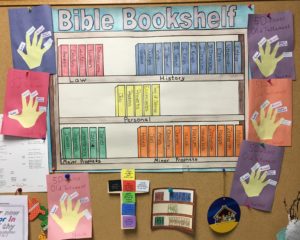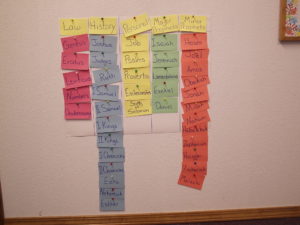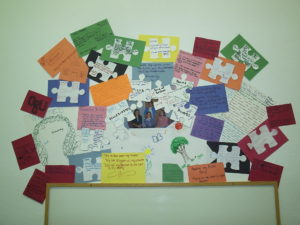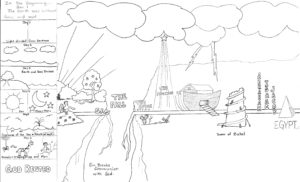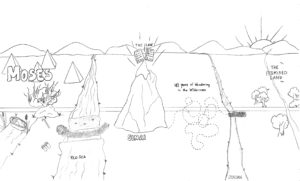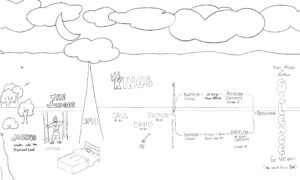Key Verse
“But his delight is in the law of the LORD; and in his law doth he meditate day and night.” Psalm 1:2
After reading this verse, think of some laws or rules we are expected to obey. Should we break the law? What happens if we do? Think about why it is important to have laws. Understand God has laws. His laws are the most important, and we are to obey them. Help them understand the memory verse. Remind your students that obedience is very important to God as we see throughout His Word. When Adam and Eve disobeyed God, they were disciplined and cast from the Garden of Eden. Take a few minutes to think of some examples in the bible where people disobeyed God’s commands and were disciplined, or examples of people obeying God’s commands and Him blessing.
In this lesson we begin to consider God’s Law, and the importance of obedience to God’s Word. The word Pentateuch means “five books.” The first 5 books of the Old Testament are also referred to as “the Law.” Moses recorded these books. Within these books, we find the first 2500 years of history. God’s laws are important. God demanded obedience from his people. By knowing and understanding God’s commands to His people, we are better able to live as Christians.
Optional Worksheets to be downloaded:
Lesson 5 – Volume 1 Children’s Worksheet 1
Lesson 5 – Volume 1 Children’s Reinforcement Worksheet
Ideas for children:
- In any lesson, you may want to work on your coloring timeline – especially when it relates to the lesson.
- Display the poster of the books of the Old Testament (may be downloaded from lesson 4 blog). Review the books of The Law (showing them on the poster). You may have them draw a picture of their favorite story from the books of The Law. Review the 3×5 cards if you made them, practicing the divisions. Focus on putting the books of The Law in order for today’s lesson.
- Review last week using their hands of the five divisions of the Old Testament if you made them. Emphasize that the thumb was for the first division. Today, for Genesis, begin with the thumb. Hold up your thumb and say, “For Genesis, there are 4 Main Events to remember.” As you say them, hold up a different finger for each one until all of your fingers are extended when you finish. They are: The Creation, The Fall, The Flood, and The Tower of Babel. When you finish, repeat the process for the 4 Main People: Abraham, Isaac, Jacob, and Joseph.
- For Exodus, use both hands to remember: 10 Plagues, and 10 Commandments.
- For Leviticus, remind them that God created them and wants them to be His special people. In Leviticus, God teaches his people to live as special people belonging to God.
- For Numbers, God’s people are counted 2 times (hold up two fingers.) Also, there were 12 spies sent into the Promised Land. 10 said no, 2 said yes (that they should obey God and could conquer the land.)
- For Deuteronomy, the last book in this division, Moses reminds the people they will be blessed if they obey God, and they will be cursed if they do not obey God. Moses died at the end of this book and Joshua (one of the 2 spies that believed they could conquer the land) was appointed their new leader.
- You could also find a coloring sheet of one of the events you discussed.
Mural idea:
Refer to the wall in your classroom that has become a mural. For this week, have them each add the picture, news article, poem they have written, picture they may have drawn, etc. of something they believe is relevant to the lessons we have been studying. Encourage everyone to participate. Watch as it grows weekly, as they express what God is revealing to them through our study of how the Bible fits into His plan to help us become more like Him.
Today, have them decorate another puzzle piece (may be downloaded from Lesson 3 blog) with some of God’s “laws” they should obey. Have them come up with them on their own so they are not all the same. After they have finished, have them share what they wrote on their puzzle piece as they add it to your wall.
